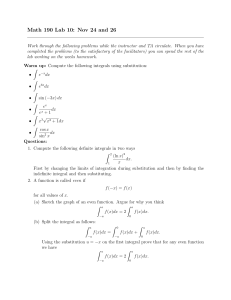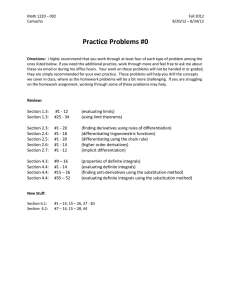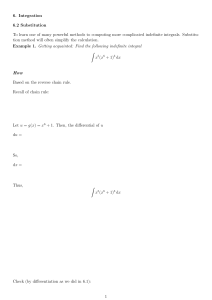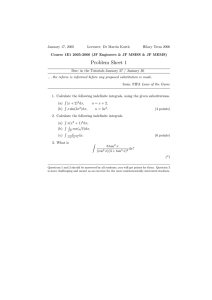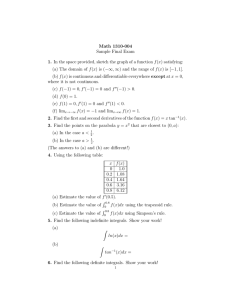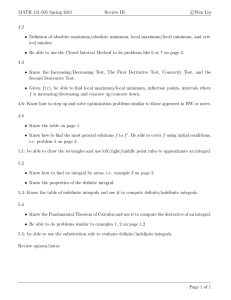Math 1100-5 Fall 2004 Review for Test III Information
advertisement
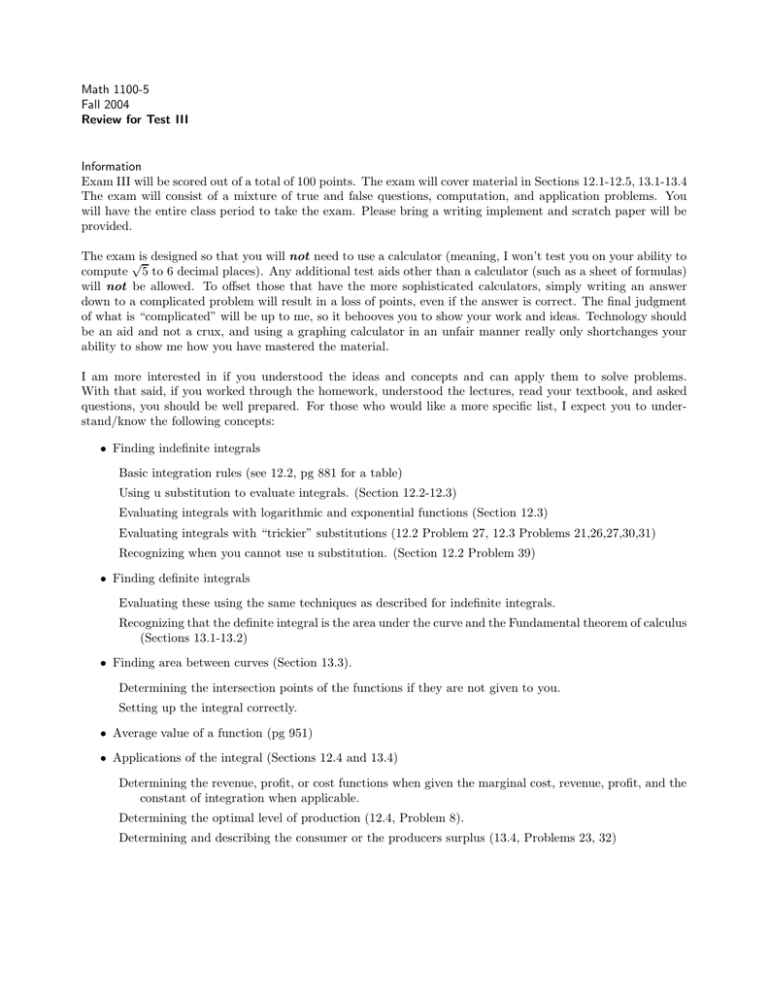
Math 1100-5 Fall 2004 Review for Test III Information Exam III will be scored out of a total of 100 points. The exam will cover material in Sections 12.1-12.5, 13.1-13.4 The exam will consist of a mixture of true and false questions, computation, and application problems. You will have the entire class period to take the exam. Please bring a writing implement and scratch paper will be provided. The exam√is designed so that you will not need to use a calculator (meaning, I won’t test you on your ability to compute 5 to 6 decimal places). Any additional test aids other than a calculator (such as a sheet of formulas) will not be allowed. To offset those that have the more sophisticated calculators, simply writing an answer down to a complicated problem will result in a loss of points, even if the answer is correct. The final judgment of what is “complicated” will be up to me, so it behooves you to show your work and ideas. Technology should be an aid and not a crux, and using a graphing calculator in an unfair manner really only shortchanges your ability to show me how you have mastered the material. I am more interested in if you understood the ideas and concepts and can apply them to solve problems. With that said, if you worked through the homework, understood the lectures, read your textbook, and asked questions, you should be well prepared. For those who would like a more specific list, I expect you to understand/know the following concepts: • Finding indefinite integrals Basic integration rules (see 12.2, pg 881 for a table) Using u substitution to evaluate integrals. (Section 12.2-12.3) Evaluating integrals with logarithmic and exponential functions (Section 12.3) Evaluating integrals with “trickier” substitutions (12.2 Problem 27, 12.3 Problems 21,26,27,30,31) Recognizing when you cannot use u substitution. (Section 12.2 Problem 39) • Finding definite integrals Evaluating these using the same techniques as described for indefinite integrals. Recognizing that the definite integral is the area under the curve and the Fundamental theorem of calculus (Sections 13.1-13.2) • Finding area between curves (Section 13.3). Determining the intersection points of the functions if they are not given to you. Setting up the integral correctly. • Average value of a function (pg 951) • Applications of the integral (Sections 12.4 and 13.4) Determining the revenue, profit, or cost functions when given the marginal cost, revenue, profit, and the constant of integration when applicable. Determining the optimal level of production (12.4, Problem 8). Determining and describing the consumer or the producers surplus (13.4, Problems 23, 32)

